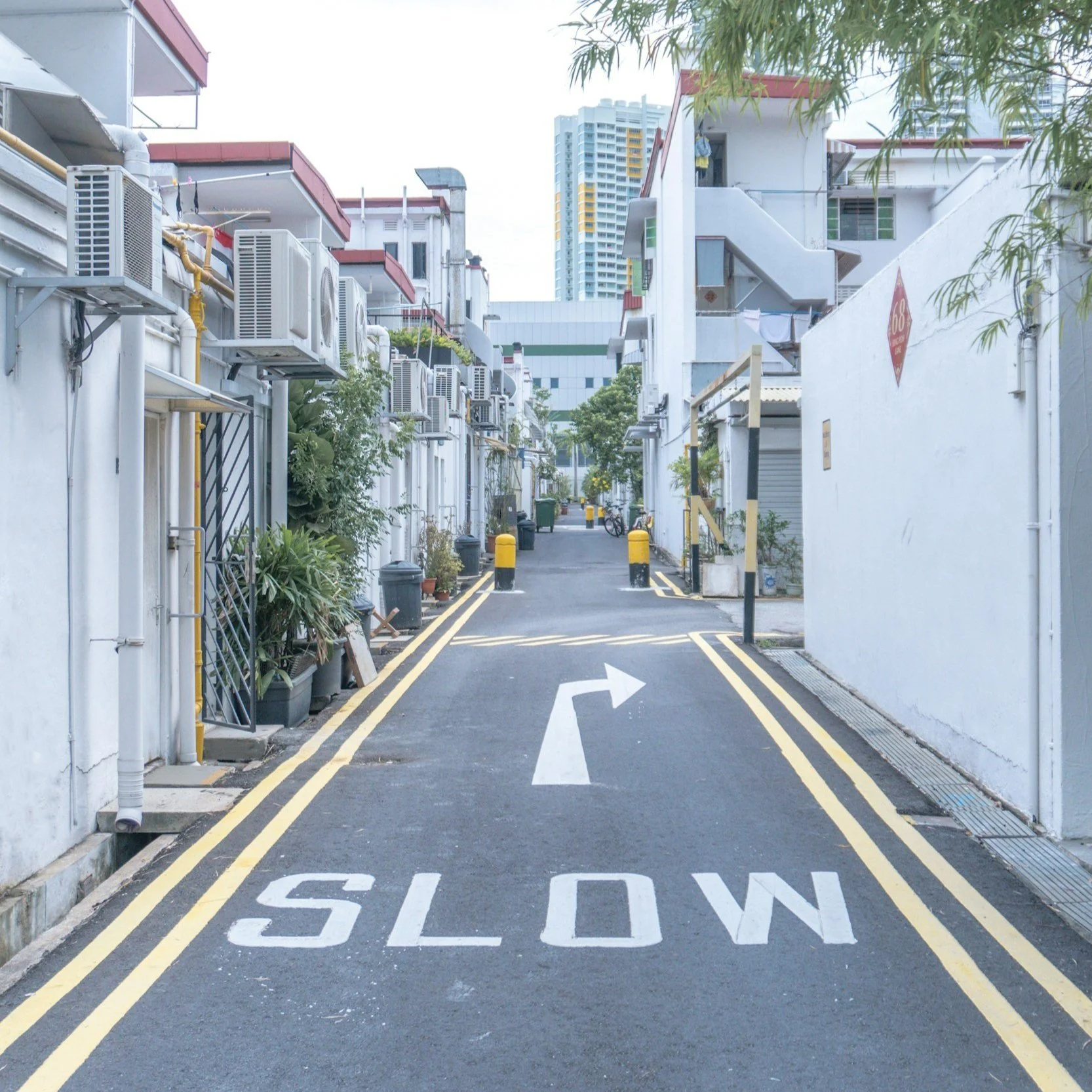Key Ingredients - Slow Down
“Show me the ways you avoid stillness, and I’ll show you the patterns that run your life.”
If your value, self-worth, or identity has historically been tied to outputs and achievements, the idea of slowing down might sound wildly uncomfortable. You might be afraid that slowing down will mean you’ll no longer be productive, get results, or create/maintain momentum.
But slow is not the same as stagnant.
Slowing down is how you reclaim your attention from a myriad of distractions so that you can realign with what matters most. It’s how you remember what a genuine yes feels like and learn to graciously say no to everything else. It’s the practice of listening in new ways and gaining confidence (read: trust) by listening to yourself first rather than outsourcing your knowing to every expert, influencer, or AI persona. It’s learning to notice patterns and synchronicities you might otherwise overlook and responding to such observations with intention.
Practicing the art of slowing down is an anomalous way of being in a culture that prioritizes productivity and efficiency. It’s a practice, a discipline. But unlike a new diet or exercise routine, you can feel the positive effects of slowing down immediately. Even after one session together, many of my clients say they leave feeling calmer and more grounded.
And this matters! Creativity requires calm. In her newest book, Beyond Anxiety, Martha Beck compiles research and case studies suggesting that when we’re living in a constant state of anxiety, we’re neurologically unable to access our full creativity. When you’re running on autopilot, anxiously over-achieving, it’s unlikely you’ll be able to hear new Ideas, perspectives, or solutions to that stuck feeling you’ve been experiencing.
So, if your goal is to explore new Ideas and (re)discover purpose, we have to start by slowing down. And as your coach, it’s my job to create a container in which you feel safe enough to do so. Much like the mirepoix in cooking, slowing down lays the foundation for Anomaly’s process and all of the ingredients that follow.
Flavor builds from here.
There are many ways to begin practicing slowing down. Meditation, breath-work, and journaling are of course fan favorites. But, let’s try this one together, just for fun:
Grab a pen and piece of scratch paper. On the left side of the paper, sign your name as if you were signing an autograph for your biggest fan. Now, just to the right of your signature, draw its mirror image. In other words, recreate your signature from the last letter to the first. Take your time.
How did you do?
What did you notice about your attention during this exercise?
What did you notice about time?
As you were drawing the mirror image, where did your anxiety go?
I may not be able to hear your responses, but I’m willing to guess that you struggled (we all burn the first pancake), your attention was focused, time slowed to the present moment, and… maybe just for a few seconds… your anxiety released. That’s not to say you didn’t feel challenged or frustrated, but those emotions were likely rooted in the present rather than existing as mirages of the past or future.
Oh, and by the way, you just created a few new neural pathways – congratulations! This is the power of slowing down. It can literally change your brain.
(Credit: This exercise is also from Martha Beck’s book, Beyond Anxiety.)

